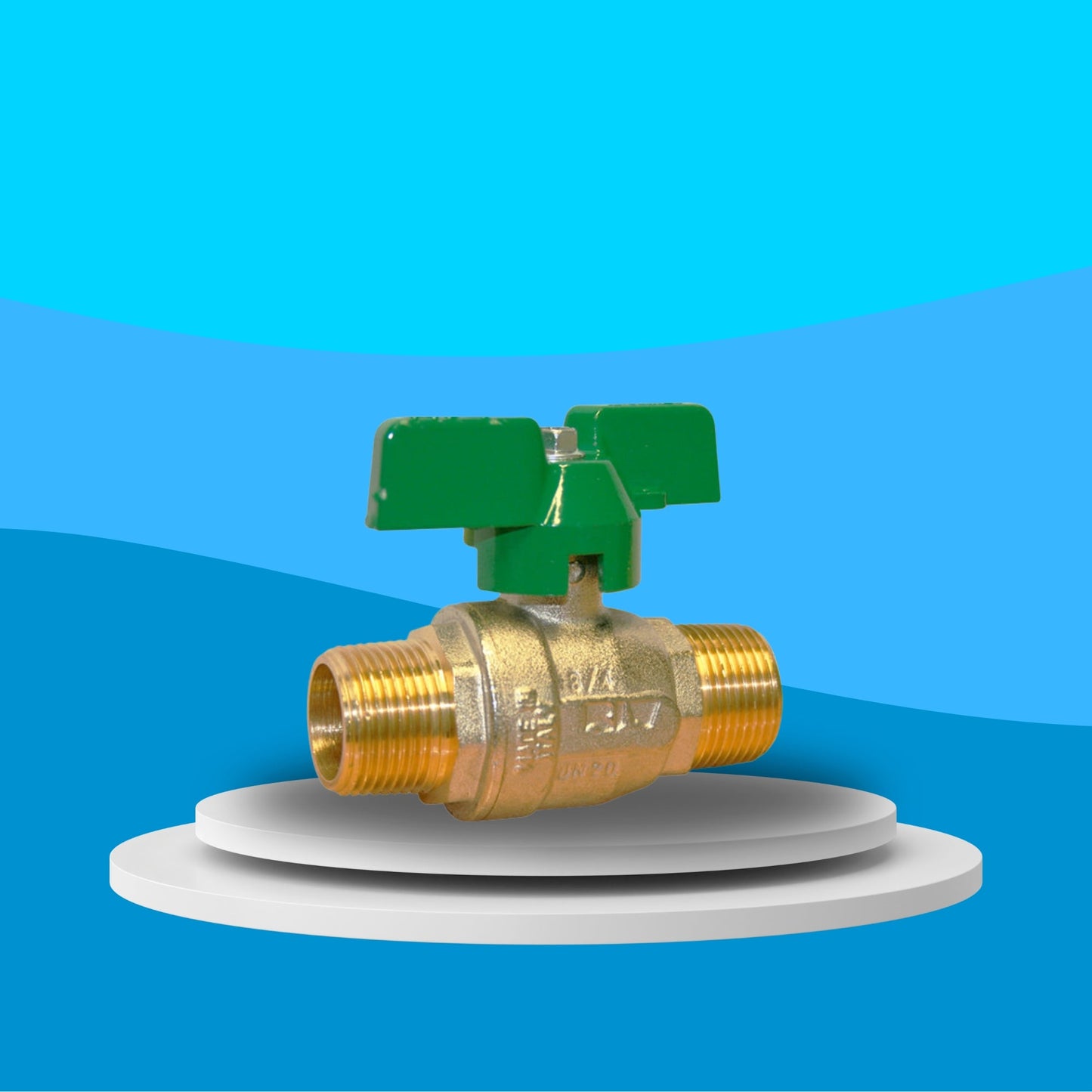Wras Valves
Wras Approved Brass Ball Valve - Long Pattern (Butterfly Lever)
Wras Approved Brass Ball Valve - Long Pattern (Butterfly Lever)
Couldn't load pickup availability
WRAS Approved | Long Pattern | Screwed BSPT Male | Nickel Plated Brass | Full Bore | Butterfly Handle
The WRAS Approved Brass Ball Valve – Long Pattern with Screwed BSPT Male threads and a butterfly handle is engineered for precise shut-off control in potable water systems and general fluid handling applications. Built with a nickel-plated brass body, this valve delivers enhanced corrosion resistance and mechanical strength, making it ideal for demanding environments.
Its long pattern design allows for greater reach and installation flexibility, particularly in systems requiring deeper engagement or added clearance. The full bore design ensures maximum flow capacity with minimal pressure loss, supporting efficient system performance. The butterfly handle offers smooth, space-saving manual control, ideal for tight or enclosed installations.
Rated for PN64 at ½″ and PN40 at ¾″ and 1″, this valve handles medium to high-pressure systems with ease. Operating within a wide temperature range of -20°C to 150°C, it’s suitable for both hot and cold water systems where WRAS approval is required.
WV 4424
Share

FAQ's
What is the difference between a valve and an actuator?
What types of actuators are available?
The main types of actuators are:
Pneumatic actuators – use compressed air for fast, reliable operation.
Electric actuators – use electrical power for precise control.
Hydraulic actuators – use fluid pressure for high-torque applications.
Each type offers unique advantages depending on the environment, media, and system control needs.
How do I choose the right actuator for my valve?
To select the correct actuator, consider:
Valve type and torque requirement
Power source available (air, electric, or hydraulic)
Operating environment (temperature, humidity, hazardous area)
Control signal type (on/off or modulating)
Matching actuator torque and compatibility with the valve’s ISO mounting ensures reliable performance.
What are the main types of valves used in automation?
The most common valves in automated systems include:
Ball valves – for tight shutoff and quick operation.
Butterfly valves – for larger flow control with compact design.
Globe valves – for precise throttling and flow regulation.
Check valves – to prevent backflow.
Gate valves – for full bore flow isolation.
What’s the difference between a double-acting and spring-return actuator?
Double-acting actuators use air (or power) to both open and close the valve.
Spring-return actuators use air to open (or close) the valve, and a built-in spring to automatically return it to a safe position when power or air is lost — ideal for fail-safe operation.
How often should valves and actuators be serviced?
Regular maintenance intervals depend on operating conditions, but a good rule of thumb is to inspect every 6–12 months.
This includes checking for leaks, lubrication, seal wear, and actuator responsiveness to prevent unexpected downtime.

